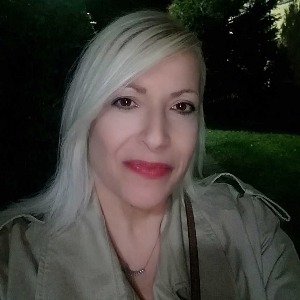Title : Will be Updated Soon..
Vasiliki E Kalodimou, European University-Cyprus Ltd, Germany
Will be Updated Soon...

Will be Updated Soon...

This study investigated the effects of physical factors induced by magnetite nanoparticles (specifically, constant magnetic fields and sorption activity) on microorganisms belonging to various taxonomic groups. Biomarkers included the intensity of Free Radical Lipid Peroxidation [....] » Read More

Background: Wound healing is one of the most important medical issues occurring due to the injuries or diseases. Various wound dressings with advanced physio-mechanical properties have beenfabricated for this purpose. Amongthese biomaterials, self-pumping structures with their [....] » Read More
Title : Will be Updated Soon..
Nagy Habib, Imperial College London, United Kingdom
Will be Updated Soon...
Title : AI-integrated high-throughput tissue-chip for space-based biomanufacturing applications
Kunal Mitra, Florida Tech, United States
Will be Updated Soon...
Title : Will be Updated Soon..
Alexander Seifalian, Nanotechnology & Regenerative Medicine Commercialisation Centre, United Kingdom
Will be Updated Soon...
Title : The regenerative medicine of the future
Marco Polettini, DVM, Italy
Will be Updated Soon...
Title : Will be Updated Soon..
Lucie Bacakova, Institute of Physiology of the Czech Academy of Sciences, Czech Republic
Will be Updated Soon...
Title : Personalized and Precision Medicine PPM as a unique healthcare model via pathology related modeling biodesign inspired translational applications and clinical practice of the next step generation to secure the human healthcare and biosafety
Sergey Suchkov, N.D. Zelinskii Institute for Organic Chemistry of the Russian Academy of Sciences, Russian Federation
Will be Updated Soon...
Title : Will be Updated Soon..
Sandeep Shrivastava, Datta Meghe Institute of Medical Sciences, India
Will be Updated Soon...
Title : Stem cell technologies to integrate biodesign related tissue engineering within the frame of cell based regenerative medicine: towards the preventive therapeutic and rehabilitative resources and benefits
Sergey Suchkov, N.D. Zelinskii Institute for Organic Chemistry of the Russian Academy of Sciences, Russian Federation
Will be Updated Soon...
Title : In vitro evaluation of lyophilized Dedifferentiated Fat cells (DFAT) impregnated artificial dermis
Kazutaka Soejima, Nihon University, School of Medicine, Japan
Dedifferentiated fat cells (DFAT) were infiltrated into an artificial dermal collagen sponge under reduced pressure, followed by lyophilization to create lyophilized DFAT-impregnated artificial dermis. In this study, the release of bioactive substances was examined in vitro. M [....] » Read More